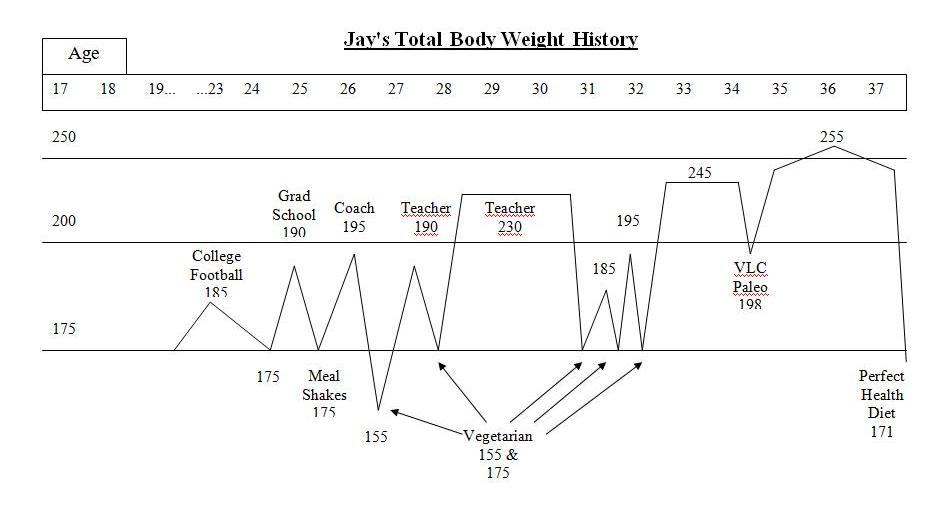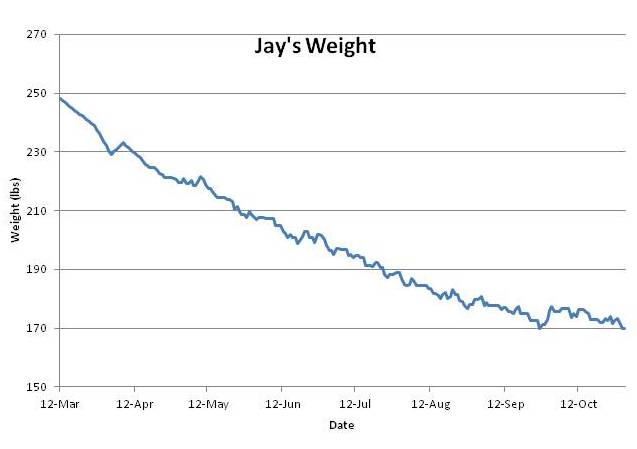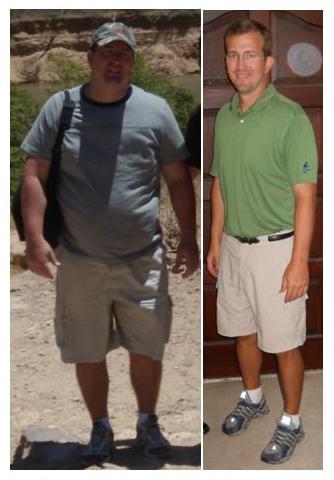My apologies: I have been busy with work obligations lately. I hope to return to a regular blogging schedule soon.
[1] News: The recent flurry of interviews is winding down:
- My interview with Miriam Knight of New Consciousness Review has just appeared. I really enjoyed talking with Miriam.
- Dr Mercola has published a transcript of his video interview with me. If you’d rather read than watch, check it out.
- I’ll be appearing with Sean Croxton on his Underground Wellness program on Thursday, Jan 19, at 8 pm EST/5 pm PST.
Second, Shou-Ching and I have been invited to blog at Psychology Today, and we’ve accepted. We’ll mostly be cross-posting similar posts at both sites, but we may write some original posts introducing our diet to that audience.
Finally, I’m going to be speaking at Paleo(fx) in Austin, Texas, March 14-17.
[2] Music to Read By: Last week’s IZ video was popular so let’s try one more: “What a Wonderful World”:
[3] Interesting Items This Week:
Adventures in food reward: Eating from a red plate and drinking from a red cup causes people to eat 40% less food. (Via John J. Ray) Quiz for Stephan: What’s the better weight loss plan: Gourmet food on a red plate, or bland food on a white plate?
I mentioned Stabby Raccoon’s binge drinking protocol last week. I didn’t mention that Stabby is from Alberta, Canada; and that the closer you live to Stabby, the more likely you are to need his protocol. Here are the percentage of binge drinkers in each state, according to the New York Times:
Gregory Cochran ponders why anyone ever thought genetic mutations would be the cause of common diseases.
Dr. Brownstein claims that bromine toxins can be passed from parents to offspring, impairing their thyroid function. Salt and iodine supplementation both help excrete bromine.
Pal Jabekk discusses “the carnivore connection” to obesity: the Paleo environment selected for insulin resistance, the modern environment for insulin sensitivity.
Dr. Jack Kruse advises a patient to try a Paleo diet for 30 days in an attempt to avert surgery.
CarbSane discusses irisin, an exercise hormone that assists weight loss.
Bix tells us why TV chef Paula Deen “can’t keep pushing mac and cheese and deep-fried Twinkies.”
“Circadian rhythm therapies,” such as sociability and looking at human faces, improve health; Chris Kresser makes a case for nature as an effective therapy. I know it always makes Shou-Ching and me feel better. (Note to Steve: I first wrote “Shou-Ching and I” and then remembered you.)
In some hard-to-diagnose cases, Lyme MD says, “Acupuncture and traditional Chinese herbal therapy would be much better than what I have to offer.”
Chris Highcock reports that obesity-promoting gut flora protect against heart attacks by suppressing leptin, which worsens heart attacks.
Cheeseslave is embarrassed. Her waist to hip ratio is too high: 0.72.
Derrick Martin believes “macrobiology” is being neglected.
Paleo Pepper discusses causes of PCOS.
Via Tyler Cowen, a neat story on the communion wafer industry. Sister Lynn of the Benedictine Sisters of Perpetual Adoration learned how to make gluten-free wafers:
We eventually made a bread that worked with .01% gluten content [as compared to the 12-14% in normal communion wafers]… The Church said that was acceptable to them, so we gave the breads to people with coeliac’s [sic] disease and they had no reactions whatsoever.
A rare white penguin has been spotted in Antarctica:
Economists find that fasting during early pregnancy impairs the child’s intelligence.
Argentine President Christina Fernandez had her thyroid removed for fear of thyroid cancer, but it was a false alarm – her thyroid was fine.
Cygnia Rapp, the creator of Melt Organic Butter Spread, gave a very nice review of our book. She’s an organic food producer in Idaho.
New York City really does have a modern caveman. No, it’s not John Durant! But what is his diet?
Stephan addresses an issue – physiological insulin resistance on low-carb diets – we discussed in our reply to Ron Rosedale:
The first study to address this question was published in 1935 by Dr. H.P. Himsworth (Himsworth HP. Clin Sci 2:67. 1935). He found that insulin sensitivity was increased by feeding a high-carbohydrate diet and decreased by feeding a low-carbohydrate diet, but these effects were only observed at very high (70-80%) and very low (less than 10%) carbohydrate intakes, respectively.
[4] Cute animal:
Via Yves Smith.
[5] New Papers and Books This Week:
Congratulations to two top Paleo bloggers who published new papers this week:
- Chris Masterjohn has a new review paper, here, on the therapeutic potential of green tea.
- Stephan Guyenet has a new review paper, here, on the regulation of food intake and body mass in obesity.
Richard Nikoley’s new book, Free The Animal: Lose Weight & Fat With The Paleo Diet, has come out. From the cover image I at first thought the title was “Beyond the Blog,” and even Richard refers to it as “My ‘Beyond the Blog’ Book”. Congratulations, Richard.
Finally, Chris Highcock of Conditioning Research has come out with an ebook, Hillfit: Strength. The booklet is available for download from www.hillfit.com. I was able to read a copy and it is excellent.
His booklet is an introduction to fitness. It is designed to help readers develop versatile and functional strength that enables them to excel at natural human movement. Chris breaks strength down into 5 basic functional patterns – two upper body patterns (pushing and pulling), two lower body (squatting and hip-hinging), and one whole body (running/hiking) – and shows exercises that can be done indoors without equipment to develop strength in all five patterns.
Although this is marketed as a booklet to make you “Hillfit”, ie good at moving over mountains and hills, it could just as well have been titled “Lifefit.”
Congratulations on an excellent book, Chris.
PS – Doug McGuff also has a review. Doug had a great week as well, he was interviewed by Dr Mercola and sold a lot of copies of Body By Science.
[6] Of Safe Starches and Ketogenic Dieting: Lucas Tafur discusses safe starches and blood glucose. He adds:
Despite my obvious differences with Paul (33), his dietary advice is very reasonable and his diet is the first I recommend.
Thanks, Lucas. It is not clear to me why we have differences. The main difference seems to be that Lucas equates low-carb and ketosis (for instance, in his most recent post he says “I will use low carbohydrate and ketogenic diets equally,” ie, interchangeably), whereas I distinguish them because you can generate ketones even on a high-carb diet by flooding the liver with MCT oil or coconut oil. In the post in which he disagreed with me, Lucas took my critique of zero-carb diets to be a critique of ketogenic diets, which I did not intend at all; I believe ketogenic diets are therapeutic for many conditions and should be a weapon in everyone’s dietary arsenal. I simply believe that making a diet ketogenic through the use of carb-starvation, rather than by MCT oil, should be viewed as a method of short-term fasting that is unsafe as a long-term diet.
I understand that Lucas has increased his “safe starch” consumption recently, so perhaps we are converging!
[7] From the Comments:
Joan reported her work-in-progress results from using PHD for Crohn’s:
Results? Well, I’m still off steroids which my gastroenterologist didn’t think would happen! I do still get diarrhea and pain at times but that is often a result of my experimentation with different things. I got alot of bloating and gas when I first introduced carbs and 100g of rice (uncooked weight) looked enormous. The bloating is decreasing and my stomach capacity must have increased! I’m getting closer to understanding what works for me so hope things will settle down further. A major improvement has been my increase in energy; I no longer require one or 2 naps during the day and I’m slowly upping my exercise.
It definitely is a “work in progress” but I feel confident this is the right path. Steroids have wrecked my body (I have an artificial hip due to osteoporosis) and the future looked grim. Thank you Paul and Shou-Ching for giving me hope.
Joan also did a do-it-yourself fecal transplant using a colonic enema kit, and reports results. KH quotes Proverbs 13:12 in reply: “Hope deferred makes the heart sick, but a longing fulfilled is a tree of life.”
Lance Strish notes that Dr Greger opposes fermented foods. On the strength of Seth Roberts, the Weston A Price Foundation, and many traditional cuisines, we have included fermented foods in our food plate and have been eating them ourselves for the last year, but I’m still open to counter-evidence. Live cultures are surely not risk-free.
Rob links to an interesting story. High fiber did not solve Hitler’s gut dysbiosis – and neither did strychnine, cocaine, or amphetamines.
Mario notes evidence linking Sjogren’s syndrome to viral infections.
Kyle and Connie Warner give us interesting stories about the links between cyanobacteria and ALS and Parkinson’s.
Finally, Dale wonders if we designed this dog’s diet:
Actually I bet a “Perfect Puppy Diet” book would do well. I notice on Amazon that The Culinary Canine is doing well, perhaps because of great recipes like “Muttloaf”:
[8] Not the Weekly Video: Owl – or blood-sucking bat?:
[9] How Henry Harpending Escaped Being Turned Into a Frog:
Everyone except the Americans agreed that witchcraft was a terrible problem, that there was danger all around, and that it was vitally important to maintain amicable relations with others and to reject feelings of anger or jealousy in oneself. The way it works is like this: perhaps Greg falls and hurts himself, he knows it must be witchcraft, he discovers that I am seething with jealousy of his facility with words, so it was my witchcraft that made him fall. What is surprising is that I was completely unaware of having witched him so he bears me no ill will. I feel bad about his misfortune and do my best to get rid of my bad feelings because with them I am a danger to friends and family. Among Herero there is no such thing as an accident, there is no such thing as a natural death, witchcraft in some form is behind all of it. Did you have a gastrointestinal upset this morning? Clearly someone slipped some pink potion in the milk. Except for a few atheists there was no disagreement about this. Emotions get projected over vast distances so beware.
Even more interesting to us was the universal understanding that white people were not vulnerable to witchcraft and could neither feel it nor understand it. White people literally lack a crucial sense, or part of the brain. An upside, I was told, was that we did not face the dangers that locals faced. On the other hand our bad feelings could be projected so as good citizens we had to monitor careful our own “hearts”.
This all went on for an hour or so and I am ashamed to admit, here, that when the crunch came I blinked. Our employees were so adamant to show me the truth that they pooled their money so they could take me to the local witch doctor, who would turn me into a frog. “Of course he can do that, it is easy for them to do, even to white people” they said. I thought for a very short time and took the coward’s way out, I refused their interesting offer, the risk was a little too much for me.
[10] Shou-Ching’s Photo Art:
[11] Paleolithic animal diets: Paleophil questioned whether Paleolithic hunters passed up the lean portions of meat. I mentioned in my reply a link from Mark Sisson showing that even beetles adjust their food sources to optimize nutrient ratios.
But maybe a better example would be killer whales, who scorn the lean shark meat but eat the liver:
[12] Weekly Video: What Do Bears Do In the (Ontario) Woods?





















Recent Comments